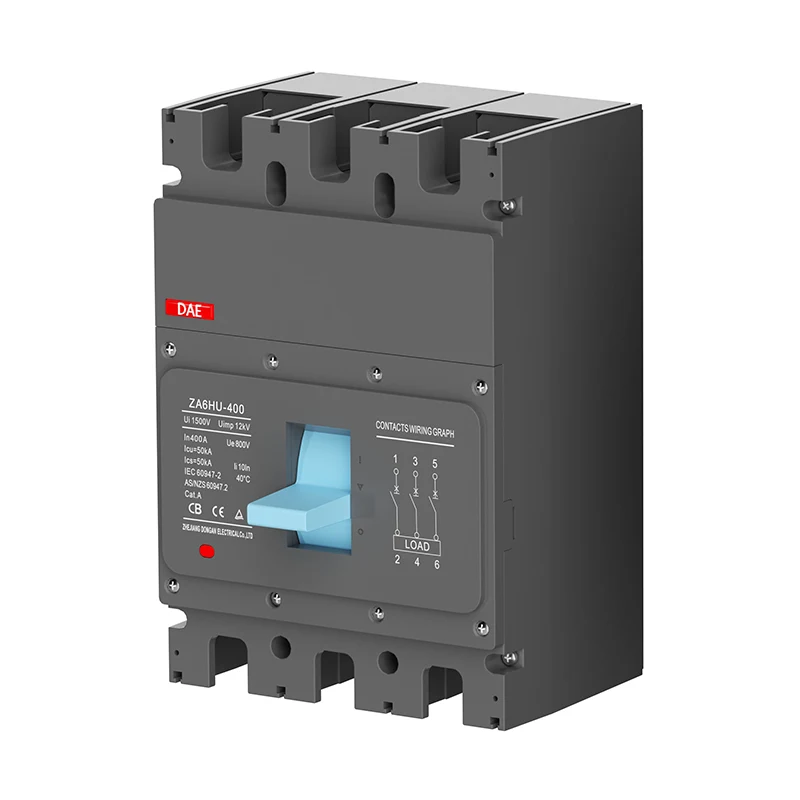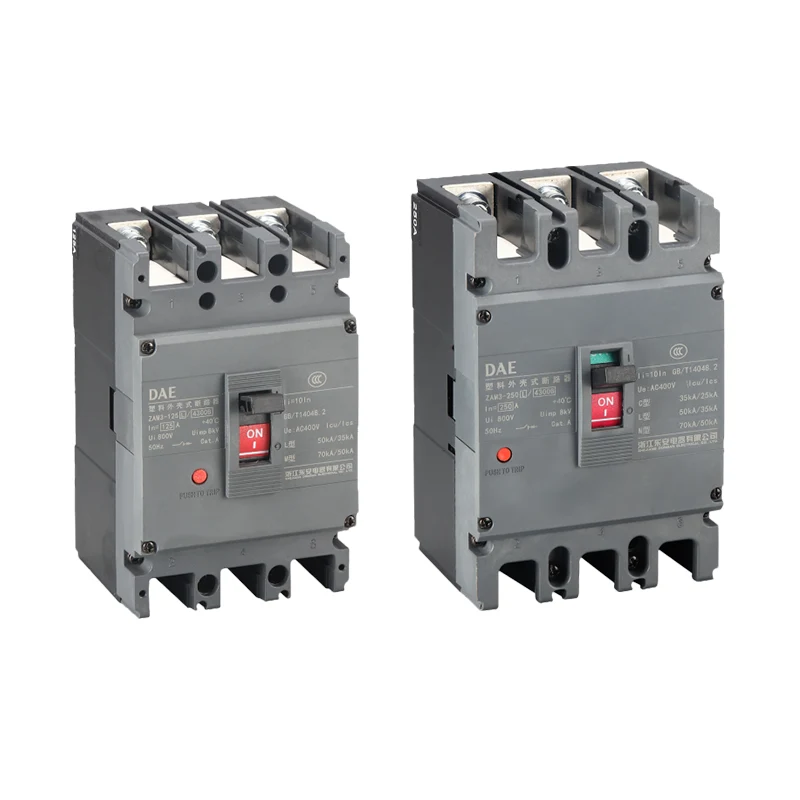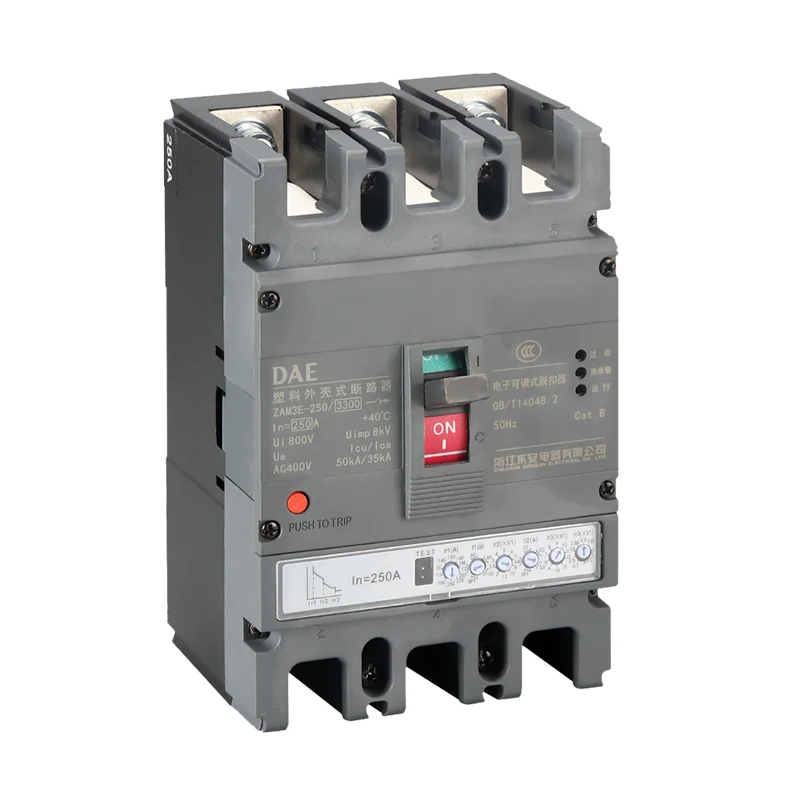What are the differences among various types of AC MCCBs?
2025-06-30
In the main distribution room of a certain data center in Pudong, Shanghai, GreenWatt's AC800V MCCB is stably carrying a current of 1600A, providing power guarantee for the server cluster. In the adjacent precision instrument workshop, the AC400V MCCB cuts off sudden faults with a response speed of milliseconds. In the smart factory further away, the electronic MCCB uploads electricity consumption data in real time through the Internet of Things platform. The reliable operation in these different scenarios reveals the technical logic behind the selection of AC molded case circuit breakers (AC MCCB) - voltage level, protection mechanism and degree of intelligence jointly constitute the core triangle of equipment adaptability.
The three mainstream models are specifically designed to meet differentiated demands
AC800V MCCB: It adopts a double-break contact structure and arc-resistant design. In the test of the photovoltaic inverter station, it successfully maintained 20 consecutive breaks without failure under the 830V overvoltage condition, and its electrical life reached 12,000 operations. The technical director of a certain new energy enterprise commented: "It enables our energy storage system to upgrade from 400V to an 800V platform without having to replace the entire power distribution architecture."

AC400V MCCB: By optimizing the parameters of the electromagnetic trip unit and thermal elements, the application case in commercial complexes shows that its short-circuit breaking capacity reaches 65kA (400V), which is 18% higher than similar products, while the action time error is controlled within ±0.5ms. The property manager did the math: "The electrical fire losses avoided last year were enough to buy 300 of these circuit breakers."

Electronic MCCB: Equipped with a 32-bit microprocessor and CT sensor, In the actual measurement of semiconductor factories, it can accurately identify a tiny overload of 0.2 inches and push the fault location information to the operation and maintenance platform through the 4G module. The head of the equipment department remarked, "Previously, it took two hours to check for faults. Now, after receiving an alarm on the mobile phone, we can locate the specific circuit within five minutes."

How to choose the best?
“Choosing MCCB is like equipping a building with a fire protection system; you first need to consider what materials to burn.” GreenWatt technical experts summarize the selection logic with life-like metaphors.
Check the voltage level: The 800V model is specifically designed for high-voltage scenarios such as new energy and rail transit, while the 400V model covers 90% of industrial and commercial electricity usage. Choosing the wrong model may lead to insulation failure or cost waste - a certain automobile factory once caused three equipment burnout accidents due to mistakenly connecting 400V circuit breakers to the 800V system.
Check the protection accuracy: Electronic models are suitable for precision equipment and data centers, while thermal magnetic models meet the protection requirements of ordinary motors. The choice made by a certain hospital in Shenzhen is quite representative: the ICU ward is equipped with electronic devices, while the general departments use thermal magnetic devices. As a result, the annual maintenance cost has decreased by 65%.
When it comes to intelligent requirements: For scenarios that need energy consumption monitoring and remote control, electronic models are a must. For traditional equipment rooms, basic models are sufficient. The practice of a certain commercial complex in Hangzhou shows that the energy-saving benefits brought by electronic circuit breakers can cover the equipment price difference within three years.
The "Protective Trio" of circuit breakers
The vacuum interrupter of the AC800V model adopts a ceramic metallization process. When breaking an 800V/100kA current, the arc energy generated is 82% lower than that of air arc interrupters.
The bimetallic strip of the AC400V model has undergone 100,000 thermal cycle tests and can still maintain a tripping accuracy of 0.5% in extreme environments ranging from -40℃ to +70℃.
The self-diagnostic function of the electronic model can detect 12 potential hazards such as contact wear and spring fatigue, and issue early warnings for faults 30 days in advance - data from a certain steel plant shows that this function reduces unplanned downtime by 78%.
Evolving from "Fuse" to "Security Guard"
The electrical supervisor of BYD factory demonstrated their power distribution system: 800V electronic type for photovoltaic inverters, 400V intelligent type for production lines, and basic electronic type for office areas. The three systems were interconnected through GreenWatt's cloud platform and successfully intercepted 23 potential electrical accidents last year.
Let circuit breakers be the starting point of energy management
All models comply with the RoHS standard. The casing is made of recyclable PA66+GF30 material, with a disassembly recovery rate of 92%.
The standby power consumption of the electronic model is less than 2W, which is 80% more energy-efficient than the traditional electromagnetic model. As a result, a certain data center saves 120,000 yuan in electricity bills annually.
The modular design of the AC800V model enables the replacement of the contact system to take only 10 minutes, and the waste generated during maintenance is reduced by 75% compared to the overall replacement.
A good circuit breaker should be like an invisible bodyguard - not noticeable in normal times but absolutely reliable in critical moments. General Manager GreenWatt outlined the vision at the annual technology release conference: "We are developing an AI fault prediction system. In the future, circuit breakers will actively learn the power usage patterns, transforming electrical safety from 'post-event handling' to 'pre-event prevention'."




